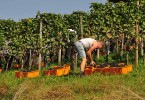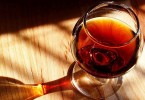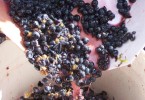Mulled wine, like a hot hug for the cold winter evenings
During the cold winter, mulled wine is the perfect ally to heat body and soul. This hot drink has numerous benefits, antiseptic and balsamic properties thanks to the active principles of its ingredients. Wine tannins have an antiviral action, the cloves are powerful antibacterial and lemon zest is considered antiseptic and balsamic.
Holydays are the perfect period to drink mulled wine together with friends; for this reason its main characteristic is the conviviality.
Let’s discover together the ancient origins and the recipe of this alcoholic cuddle.
Origins of Mulled Wine
Mulled wine has ancient origins. The ancient Romans often used wine and honey also adding spices like bay tree, pepper, saffron and dates, which have a preservative role. The name of this drink was Conditium Paradoxum as the Re Conquinaria of Apicio witnesses.
After this, the recipe was further developed by the monks that knew very well the properties of the herbs; in the Medieval period people drunk cold spicy wines with a flavour similar to the mulled wine that we drink today.
During the years the tradition to drink hot wine has spread among the population of the Alps and the European countries where the weather is really cold.

Preparation of Mulled Wine
Ingredients:
1 litre of still and strong red wine
2 cinnamon sticks
8 cloves
Lemon and orange zest
200 gr of sugar
½ nutmeg
1 star anise
The main element of mulled wine is red wine, however, in some regions of the Alps also the white wine is used. The addition of the spices can vary based on the place even if cinnamon and cloves can’t miss. The cooking has to be slow to avoid the decomposition of the sugars, that can be harmful.
The alcoholic volume depends on the wine chosen for the preparation of this beverage, usually between 11 and 14 degrees. It can vary based on the time and the cooking over low flame, because the ethyl alcohol evaporates because of the heat.
[wysija_form id=”7″]
Immagine source: www.vinook.it, www.dolomiti.it
Recipe source: ricette.giallozafferano.it







